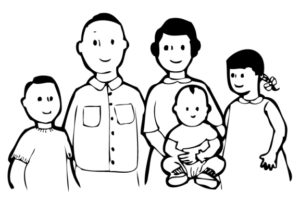A study published online in Computers in Human Behavior on December 10, 2016, found that the use of multiple social media platforms is more strongly associated with depression and anxiety among young adults than time spent online.
These findings come from a national survey of 1,787 young adults that asked about their use of 11 popular social media platforms: Facebook, YouTube, Twitter, Google Plus, Instagram, Snapchat, Reddit, Tumblr, Pinterest, Vine, and LinkedIn.
The analysis showed that people who reported using the most platforms (seven to 11) had more than three times the risk of depression and anxiety (odds ratio of 3.08 and 3.27, respectively) than people who used the least amount (zero to 2 platforms).
These increased odds held true even after adjusting for the total time spent on social media and other factors such as race, gender, relationship status, education, and income.
As to why using more platforms might be detrimental, lead author Brian Primack, M.D., Ph.D., director of the University of Pittsburgh Center for Research on Media, Technology, and Health, suggested several reasons.
One possible mechanism is that people who use many different platforms end up multitasking, such as frequently switching between applications or engaging in social media on multiple devices. Studies have found that multitasking is related to poorer attention, cognition, and mood.
Other potential problems of using multiple platforms include an increased risk of anxiety in trying to keep up with the rules and culture associated with each one and more opportunity to commit a gaffe or faux pas since attention is divided.
It is important to note that this study provided just a one-time snapshot of these people’s moods, said Joanne Davila, Ph.D., a professor of clinical psychology at Stony Brook University with a specialty in interpersonal relationships among adolescents and young adults.
“Using multiple platforms might lead to these changes in mood, but it could also be that people who are depressed or have a propensity for depression use more social media sites,” she said. “In this area of research, we have to think about what’s causing what.”
Some of Davila’s studies on social media and behavior support a causal role for social media use. Her research has not focused on how many platforms people use, but their overall experiences. In one study, she surveyed a group of volunteers three weeks apart to look at short-term behavioral changes and found that time spent online was not strongly linked with subsequent depressive symptoms. Rather, having negative experiences—which included gaffes, unwanted contacts, or cyberbullying—increased the risk for depression.
Davila suggested that these experiences lead to rumination in the users, who may start thinking of themselves in a negative light.
Samantha Rosenthal, Ph.D., M.P.H., a research associate in the Department of Epidemiology at the Brown University School of Public Health, also found that the nature of social media interactions is a significant factor for mental health outcomes. In a study published last November that surveyed 264 young adults, she and colleagues explored how negative Facebook experiences influenced depression risk. The survey revealed that these negative events are common—more than 80 percent of the participants had at least one negative experience on Facebook, and 60 percent had four or more.
After adjusting for other factors, Rosenthal found that negative Facebook experiences were independent predictors of depression risk. The precipitating event did matter, as bullying or other mean behaviors were associated with about 3.5 times higher risk, while unwanted contact was associated with about 2.5 times higher risk. Frequency of negative events contributed to risk as well, though even one instance of bullying could increase the risk of depression.
The participants in this project were already enrolled in another family study, and the researchers knew their health status dating back to 2002. This provided more reliability that the negative Facebook events were contributing to an increased risk of depression as opposed to reflecting depression.
Understanding how social media can lead to depression is one thing; using that knowledge to help people is another. The use of social media is an integral part of being a citizen in today’s modern world, said Primack.
He pointed out that the 11 platforms in his study serve many personal and professional functions, and some individuals may need to use all of them. “I don’t think we need to start quantifying social media use in a depression screen, nor will I tell patients that they are limited to a maximum of two social media platforms.”
Nonetheless, discussing social media use with patients is important, emphasized Primack, who is a family medicine physician. It is analogous to asking people with depression or anxiety about their experiences when they go out in public.
“These are virtual spaces, but they still create real emotions,” he said. “By making a patient more aware of what to expect and the possible pitfalls, it can improve their chances of having positive interactions as opposed to negative ones.”





